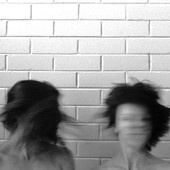Project One
Allen Hall Theatre, University of Otago, Dunedin
25/03/2010 - 26/03/2010
Production Details
Exploring personal obsessions of improvisation, props, voice and a general irreverence for the conventional processes of dance creation, four dance students, in their final year of training, decide to express their own creative and distinct voice in an unfamiliar land.
Dates: 25, 26
Venue: Allen Hall Theatre
Time: 8:30pm (Duration 50 min)
Prices: Full: $8 Concession: $5
Tickets: Door sales only
Refreshing in parts but not really innovative
Review by Alexandra Kolb 27th Mar 2010
This is the first public performance for the young company Chimera Dance Collective, which consists of four students in their final year of study at the Victoria College of the Arts in Melbourne. In their miniature programme notes, the group announce that they started the choreographic process “by considering the audience-performer relationship” and how they “can, as the next generation of dancers, challenge this tradition.”
Moreover, we learn that their choreography is about “social networking” in its different permutations. As the piece unfolds, it becomes clear that such networking is done via modern information technology; with the aid of laptop, computer projections and mobile phones. Hence we should judge Project One, which is the title of their self-proclaimed experimental half-hour piece, at least partly according to whether these ambitions have been achieved.
In the first scene, we see four chairs which are successively filled by the dancers (David Huggins, the only male dancer, is already placed in one as the audience gradually enter the auditorium). The ‘actual’ piece kicks off with him proclaiming that he has 307 friends, and subsequently listing a number of them. Two other dancers – Jordine Cornish and Rachel Doust – eventually chime in with similar claims.
The boundaries between audience and performers are fluid, with the fourth company member – Brianna Kell – yelling out questions from the auditorium until she, too, joins the other dancers on stage.
Another ‘gag’ used to interrupt the solemn atmosphere of traditional performance is that audience members have been asked to leave their mobile phones switched on, thus creating occasional disturbances through various ringtones; the ‘exotic-bird-in-the-jungle’ chirping being my personal favourite.
Rather a lot of use is made of a laptop on the downstage right-hand corner, the images, films and texts of which are projected onto the upstage screen. I cannot quite recall the content of the text files but suffice to say they are not supposed to be memorable anyway, but mostly nonsensical in nature and combination. Mobile phones are also used heavy-handedly, with nice comic effects achieved by enacting – through gesture and speech – the paradox that young people crave passion (‘frenzy of lust’) but actually resort to texting and mobile-phoning when it comes to interaction of an erotic nature.
In another scene, one of the female dancers (Brianna Kell) repeatedly asserts “I am” but is told by the male performer (apparently questioning her identity) that “no, she isn’t …never… you cannot… not ever…” whereupon she lets out a scream and drops onto the floor.
Little emphasis is placed on the display of technical virtuosity. The dancing consists mostly of the sort of thing students do in contemporary dance improvisation exercises. Dancers are dressed in everyday clothes such as T-shirts, shorts, socks and trainers.
And do the performers measure up to their proclamations? Well, in an age so saturated by, and dependent on, technological devices it is probably unavoidable that young people become infatuated by the ‘computer virus’, and I suppose it is therefore a worthwhile theme. Also granted is that the piece is relatively coherent, centring on this one topic.
The dancers, though quite inexperienced as performers, have good stage presence and make convincing use of humour. With some good will, one could interpret the fragmentary nature of their piece – with a number of scenes being not well connected – as a reflection of the kaleidoscopic nature of postmodernism itself.
However, the show does not manage to sustain tension throughout. Some scenes are too undeveloped to be convincing and I feel that the piece would, generally, benefit from tightening up. Other sections, although perhaps meaningful for the performers, seem vacuous to me. Or is this an invitation to celebrate meaninglessness?
In any case, I do not gain the impression that theatrical conventions are challenged beyond what has already been done as far back as the 1960s and ’70s (with the exception of the added benefit of contemporary media technologies which were, of course, not available then). It was a few decades ago that choreographers turned their back on previous dance practice in an attempt to subvert the audience-performer relationship and to embrace innovations, such as everyday movement, streetwear and speech on the dance stage.
In summary: a refreshing piece in parts with several inspiring choreographic ideas but in need of further development as a whole.
Copyright © in the review belongs to the reviewer






Comments